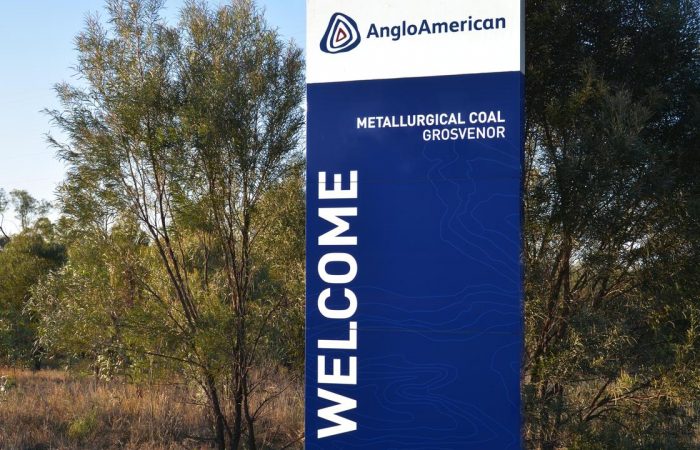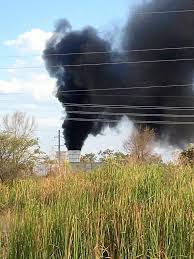
Mines Inspectors, No Section 167 Directives to “Suspend Operation” for an Unacceptable Level of Risk and Grosvenor Mine due to illegal and up to explosive levels of methane on production faces
Throughout the Inquiry there has been talk about Directives issued by RSHQ.
I am in possession of a large number of the Mine Record Entries dating from 2015 on.
While there are a number of “Directives” issued, I cannot find any occasion where the Mines Department (RSHQ) Inspectors issued a Section 167 Directive to prevent coal production from occurring due to methane or roof falls, prior to 6:15pm on the 6th May 2020
The only time I can find any Section 167 Directive to withdraw workers from the Grosvenor Mine or any part of the Mine due to an “Unacceptable level of risk” was in February 2016.
DIRECTIVE 11th February 2016
Pursuant to section 167 of the Coal Mining Safety and Health Act 1999
Prevention of exposure to Respirable dust and Silica with working activities in returns during development production. Due 16/02/2016
To suspend all working activities in returns during development production. This will require the risk assessment for this matter to be reviewed and controls to be implemented.
Inspectors Dobson stopped Grosvenor deploying contractor Mine Workers in the development panel return roadway while production was occurring for 5 days until there was a risk assessment and controls were introduced
No matter how many methane HPI’s there were both in Development and Longwall, no matter how often they occurred, no matter what levels of methane were likely present, at no stage did the Inspectors ever find that they had to suspend mining operations due to illegal and at times explosive concentrations of methane. creating an “unacceptable risk to the safety and health of mineworkers”
DOBSON DIRECTIVE DECEMBER 2016
Lets look at the so called Dobson Methane Directive referenced in the Inquiry.
Excerpts from MRE 15th December 2016
Inspector Keith Brennan and I attended Grosvenor Mine today 15 December 2016. I was going to conduct an underground inspection of the development panels and Inspector Brennan was to conduct an underground inspection of the longwall panel.
The inspection resulted in the following MRE items being issued:
Directive: To ensure compliance with the control and management of methane in the Longwall Tailgate.
SCP: To develop a documented standard for cable management on wheeling corners.
SCP: To ensure that planned work activities meet with statutory compliance matters in work activities. This includes communicate of this to statutory officials.
1.3 UMM and VO meeting
The Inspectors then met with the Ventilation officer Michael Webber and UMM Bull to discuss information previously provided with regards to Methane issues that were apparent in the Longwall Tailgate from the previous inspection from the ERZ Controllers reports.
The graphical representations provided showed that on a number of occasions that Methane appeared to be greater than 2.5% in the Longwall Tailgate. I asked Mr Webber to verify this detail for the dates and time span that this was greater than 2.5%. This was to be provided for the close out meeting.
It was noted that Methane makes were not entered on the VO’s monthly report that was provided. Mr Webber showed that these were now on current reports.
The weekly ventilation review process that UMM Bull planned to implement was discussed. I was given a copy of one of these reviews.
SSE Adam Garde committed to a process ensuring gas monitors are re-located as part of the longwall retraction process, the monitors also require a form of easy identification, the monitors are hung high in the rib line.
The matter of the Methane appearing to be greater than 2.5% in the Longwall Tailgate was presented by VO Webber where the graphs presented were from Real time monitoring system which were different to the CIT EC graphs previously provided.
These showed Methane in different concentration levels which was not clarified as to why this was the case.
I required further explanation with respect to reasons for these, the actions taken and duration of each of these events as it was not clear as to why any of these events had not been reported to an Inspector as HPl’s.
Mr Bull committed to provide this as soon as possible.
1.8 Further information provided regarding Methane issues.
An email was received on 19/12/16 from UMM Bull compiled by VO Webber.
An explanation of an event on 02/08/16 for an event where Methane greater than 2.5% in the Longwall Tailgate was due to a power outage with no persons underground. The mine was subsequently degassed.
Two further events on 06/09/16 indicate two peaks where the Methane was greater than 2.5% in the Longwall Tailgate for periods of approximately 30 minutes and 15 minutes.
I spoke with UMM Bull on 20/12/16 with regards this and required these matters to be investigated as to why these were not classified as per CMSH Regulation 366 and reported as HPl’s.
I informed that I was issuing a Directive to ensure compliance with the Act and Regulations for this matter.
DIRECTIVE Management of Methane in the Longwall Tailgate
TO ENSURE COMPLIANCE WITH THE CONTROL and MANAGEMENT of METHANE in the LONGWALL TAILGATE. (Due Date 12/01/2017)
Longwall production was never stopped at any stage.
Not even when by the 19th of May 2018 in LW102 Panel alone the mine had reported 32 HPl’s since LW 102 had commenced production in January 2018.
This represented 60% of all HPl’s in Queensland associated with Methane greater than 2.5% in Longwall TG.
What were in the closing comments on the 19th May MRE by Inspectors Marlborough and Gouldstone?
They are copied in full below but this one really sticks out in point 4
It was acknowledged that the Mine has conducted a significant amount of work to manage the gas in the LW TG and should be congratulated on the improvements in goaf drainage that have resulted from this.
- Intake pollution round the bleeder is a significant impact on the methane levels. This apparent with 04% showing on the MG methane monitor. The Mine should consider options for reducing this including reversing air around the bleeder or controlling the rib emissions by the application of Fibrecrete as has successfully been done at Moranbah North. This would benefit all subsequent blocks relying on the air from the bleeder.
- The Mine should reconsider its logic in regard to not tripping power to the shearer until 5% methane is reached and only to stop hauling at 2.0% when the shearer is between 130 shield and the TG leaving power to the cutter drums. Why wait until the methane reaches 2.5% (and hence has the resulting HPI) before tripping power to the shearer? The standard for all other Methane monitors is to trip power at 2.0% or less. Is allowing the TG monitor to reach 2.5% before power is tripped achieving an acceptable level of risk? This point was raised in the MRE issued following the meeting held on 19 Mar 2018. Mr Kirsten undertook to provide feedback on this by Friday 18 May 2018.
- The Mine needs to review the General Body Contaminants TARP to ensure that the TARP lines up with instructions given to CMW’s on operating the Longwall in a gassy environment. Automated trips, haulage restrictions and other controls should be utilised wherever possible rather than relying on “behaviours” or interpretations by operators and ERZ Controllers.
- It was acknowledged that the Mine has conducted a significant amount of work to manage the gas in the LW TG and should be congratulated on the improvements in goaf drainage that have resulted from this. The lessons learned from this work will be utilised in managing methane in LW103 which has significant challenges with its position under the Isaac River and the difficulty this imposes on goaf drainage hole positioning.
- It was also acknowledged that continued HPl’s with Methane greater than 2.5% was not satisfactory and the mine must ensure that such HPl’s are minimised, and preferably eliminated going forward.
The whole thing is just a sick tragic farce in my view.
To keep knowingly and over 4 years continue to allow/permit explosive quantities of methane on the face, when it was inevitable one of the potential ignition sources of methane will occur at exactly the same time at the same location; is a total failure of Responsibilities and Duties of the Mines Inspectorate
The Inspectorate lot did not believe despite knowing the odds, despite hundreds of years of tragedy and grief that when the holes in the cheese line up, there is your disaster.
You spun up TRIPLE 666 but you did not pay the price.
The poor unsuspecting Mineworkers did.

